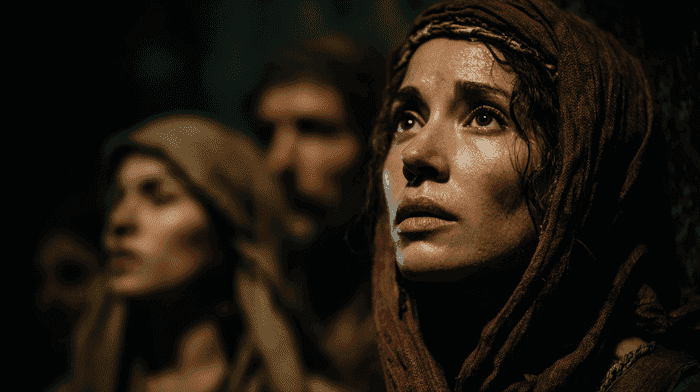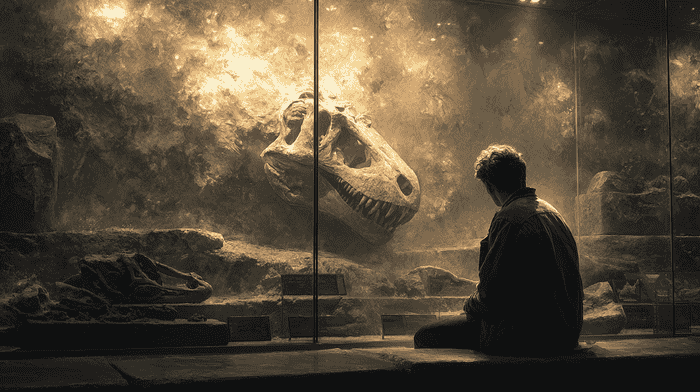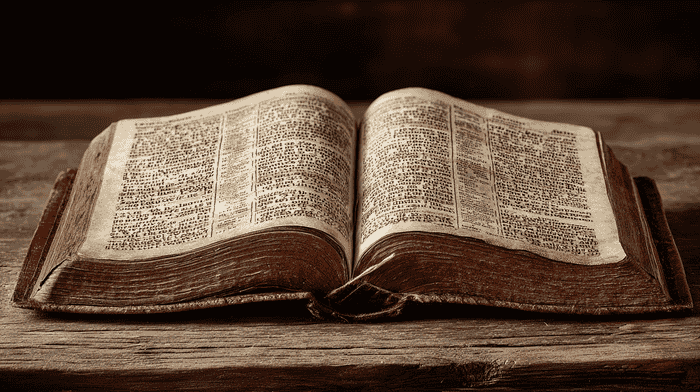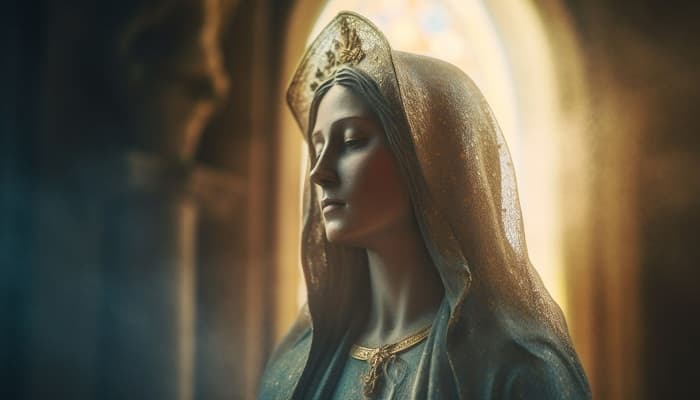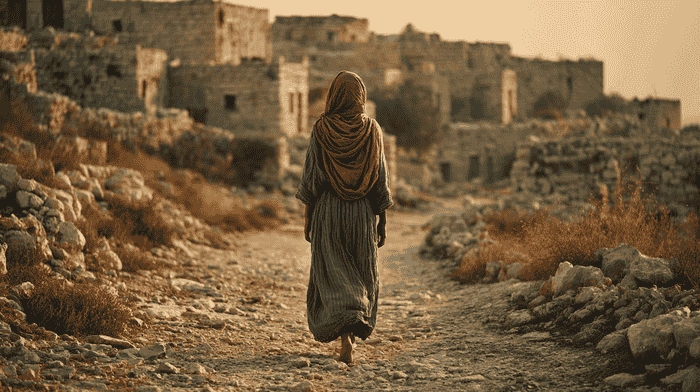Who Was Mary Magdalene? Origins and Identity
If you’ve ever tried to pin down exactly who Mary Magdalene was, you might have noticed something frustrating: the Bible doesn’t give us much detail. No family background, no job title, not even a clear hometown beyond the name “Magdalene.”
And yet, she shows up at some of the most important moments in the Gospels, moments that would shape the entire Christian faith.
Let’s start with what we do know. The name “Magdalene” likely refers to her place of origin: Magdala, a fishing town on the western shore of the Sea of Galilee. That alone tells us she wasn’t a mythical figure or symbol. She was a real person, from a real town, in a real time.
She’s introduced in Luke’s Gospel not just as a follower of Jesus, but as someone who had experienced deep personal healing:
“…Mary, called Magdalene, from whom seven demons had gone out…” (Luke 8:2, NRSV-CE)
We’re not told what those “seven demons” were. Some take it literally, others read it as a metaphor for deep suffering or spiritual torment. Either way, what matters is that Mary didn’t just go back to life as usual. She followed. She gave. She stayed.
For centuries, Mary Magdalene was lumped together with the unnamed “sinful woman” in Luke 7, or confused with Mary of Bethany (Lazarus’s sister). That blending of characters became popular after a sermon by Pope Gregory I in 591 AD, where he combined all three women into one.
However, there’s no biblical basis for that conflation, and most modern scholars, theologians, and Church teaching have since corrected it.
When we untangle those assumptions, what we’re left with is something much more striking: Mary Magdalene wasn’t a repentant outcast clinging to Jesus out of guilt. She was a spiritually restored woman who chose to follow Him, right alongside the twelve male disciples.
In a culture where women weren’t typically given space in the inner circle of spiritual leadership, Mary was there, and that alone makes her story worth paying closer attention to.
From Seven Demons to Devoted Disciple
Whatever Mary Magdalene had been through before she met Jesus, it wasn’t small. In biblical language, “seven” often implies completeness or totality. This suggests a woman who had been completely overwhelmed by suffering or spiritual affliction.
Luke 8 introduces her alongside other women who followed Jesus and supported his ministry, and the verse reads:
“Soon afterwards he went on through cities and villages, proclaiming and bringing the good news of the kingdom of God. The twelve were with him, as well as some women who had been cured of evil spirits and infirmities: Mary, called Magdalene, from whom seven demons had gone out…”
(Luke 8:1–2, NRSV-CE)
That one line quietly says a lot. Mary wasn’t just healed she responded by staying close. She followed Jesus not from a distance but with the same kind of devotion we see from Peter or John. She didn’t just say “thank you” and return to life in Magdala. She gave her time, her resources, and her loyalty.
And here’s something worth pausing on: she was part of the group that financially supported Jesus’s work. Luke adds:
“…and Joanna, the wife of Herod’s steward Chuza, and Susanna, and many others, who provided for them out of their resources.”
(Luke 8:3, NRSV-CE)
That may seem like a side note, but it tells us Mary was essential. Ministry costs something. Traveling, feeding people, helping the poor, all of that required means. Mary Magdalene was among the women quietly making that possible.
This is not the story of a desperate woman clinging to Jesus for salvation. It’s the story of someone radically transformed and fully committed. Someone who knew the cost of suffering and the beauty of freedom, and who chose to walk alongside Christ, not behind Him.
Get Closer to God Today
4.9
Average Rating
|Over 5 Million Downloads
Mary as Disciple and Apostle
When people picture Jesus and His disciples, they often imagine twelve men walking behind Him, listening intently, asking the occasional awkward question. Scripture makes it clear that women followed Him too, Mary Magdalene, chief among them.
She’s one of the few people mentioned by name in every Gospel account of Jesus’s death, burial, and resurrection. That level of consistency isn’t accidental. It tells us she was part of the core group, a witness to the most sacred moments of Jesus’s mission on earth.
At the crucifixion, when most of the male disciples had scattered, Mary Magdalene stayed.
“There were also women looking on from a distance; among them were Mary Magdalene, and Mary the mother of James the younger and of Joses, and Salome. These used to follow him and provided for him when he was in Galilee…”
(Mark 15:40–41, NRSV-CE)
Not only did she follow Jesus during His life, she stood by Him in death. She didn’t leave when it became dangerous. She didn’t retreat when the cost got high.
The most powerful moment, however, came later, when Jesus rose from the dead. According to John’s Gospel, Mary was the first to encounter the risen Christ. Not Peter. Not John. Mary.
And here’s what Jesus said to her:
“Go to my brothers and say to them, ‘I am ascending to my Father and your Father, to my God and your God.’”
(John 20:17, NRSV-CE)
That instruction (go and tell) was more than just a message. It was a commissioning. In that moment, Mary became the first person to proclaim the resurrection. That’s why early Christian writers called her “apostola apostolorum”, the apostle to the apostles.
The first witness of the resurrection, the cornerstone event of Christian faith, was a woman once thought to be demon-possessed, now entrusted with the most important message in history.
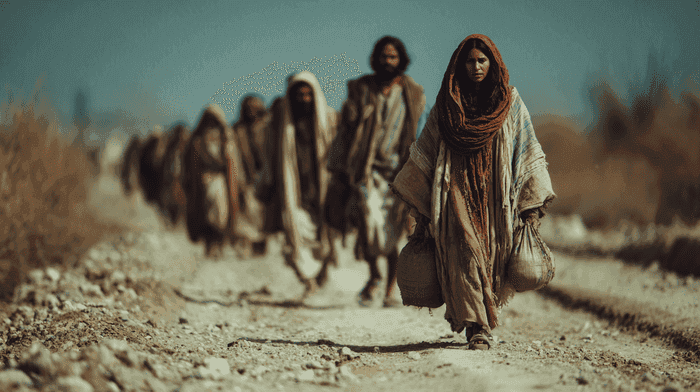
First Witness of the Resurrection
Early in the morning, while the world was still quiet and heavy with grief, Mary Magdalene returned to the tomb. She wasn’t expecting a miracle. She came to mourn. To anoint a body. To do what women have always done in moments of loss: show up, tend to the dead, and carry the weight of sorrow.
But what she found shattered every expectation.
“Early on the first day of the week, while it was still dark, Mary Magdalene came to the tomb and saw that the stone had been removed from the tomb.”
(John 20:1, NRSV-CE)
What follows is one of the most tender, emotionally charged moments in all of Scripture. Mary runs to tell Peter and the beloved disciple. They come, see, and leave confused, but Mary stays.
She weeps outside the tomb, and then she sees two angels. Then, a man she doesn’t recognize, until He speaks her name.
“Jesus said to her, ‘Mary!’ She turned and said to him in Hebrew, ‘Rabbouni!’ (which means Teacher).”
(John 20:16, NRSV-CE)
Mary Magdalene becomes the first person to see the risen Christ. The first to be sent. The first to declare the resurrection.
“Mary Magdalene went and announced to the disciples, ‘I have seen the Lord’; and she told them that he had said these things to her.”
(John 20:18, NRSV-CE)
This wasn’t just a private moment of joy. It was a public, world-shifting commission. In a culture where women’s testimony wasn’t even legally valid, Jesus chose her to be the first voice of Easter.
Dispelling Misconceptions
If you’ve heard of Mary Magdalene before reading the Bible for yourself, chances are you’ve heard the wrong version.
The most persistent myth, the one about her being a sex worker, traces back to a sermon by Pope Gregory I in 591 AD. He combined Mary Magdalene (Luke 8), the unnamed “sinful woman” who anointed Jesus’s feet (Luke 7), and Mary of Bethany (John 11–12) into a single figure. From there, the reputation stuck. Art, literature, and centuries of preaching ran with it.
But the Bible doesn’t say she was a prostitute, and modern biblical scholarship has officially untangled those threads. The Vatican itself clarified in 1969 that Mary Magdalene should be seen as a distinct figure. In 2016, Pope Francis even elevated her liturgical memorial to the level of a feast day, on par with the male apostles.
Then there’s the more sensational stuff. You’ve probably seen the theories in novels or documentaries that she and Jesus were romantically involved, or secretly married, or had children.
These claims usually point to apocryphal or Gnostic texts written well after the Gospels, like the Gospel of Mary or The Gospel of Philip.
Get Closer to God Today
4.9
Average Rating
|Over 5 Million Downloads
Apocryphal and Gnostic Portrayals
Outside the Bible, Mary Magdalene takes on a life of her own.
By the second and third centuries, early Christian communities were wrestling with theology, authority, and gender, and Mary starts showing up in some of the non-canonical texts, especially the Gnostic gospels.
The most well-known is the Gospel of Mary, a fragmented document discovered in the late 19th century but likely written in the second century AD. In it, Mary is portrayed as a spiritual leader with special knowledge.
The text suggests she received teachings from Jesus that the male disciples didn’t. Peter even questions why Jesus would speak more to her than to them. It’s a fascinating read, not because it rewrites history, but because it gives us a window into early Christian debates.
Another text, the Gospel of Philip, refers to Mary as Jesus’s “companion,” a word translated from the Greek koinōnos. Some interpret that romantically. Others say it simply reflects spiritual partnership. Either way, these writings were never considered part of the biblical canon and were written at least a hundred years after the events of the Gospels.
So what do we do with them?
They tell us something about how influential Mary Magdalene was in the early imagination of the church, especially among groups who felt pushed to the margins. But they don’t carry the same historical weight as the canonical Gospels. They’re theological reflections, not eyewitness accounts.
And that’s okay. You don’t need secret scrolls to see Mary’s importance. The Gospels themselves already paint her as bold, faithful, and entrusted with the most important message in Christian history.
Anything more than that is speculation. Anything less would be erasing her.
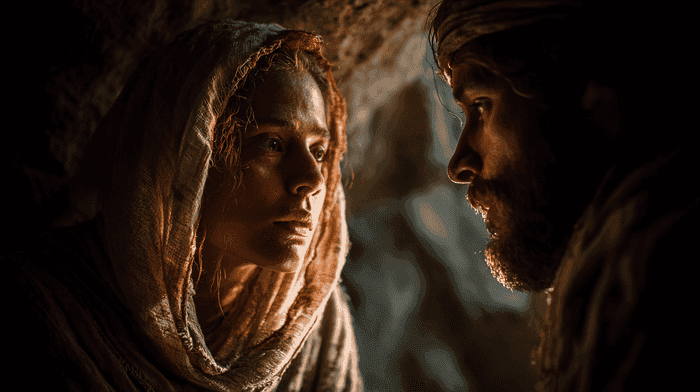
Final Thoughts: Mary’s Enduring Legacy
Centuries after her name was misremembered, misused, and misunderstood, Mary Magdalene’s real legacy is finally being reclaimed.
The Church has come a long way. In 2016, when Pope Francis elevated her memorial to a feast day, he called her the “Apostle of the Apostles”, a recognition that had existed in early Christian writings but was often forgotten. She was the first to proclaim the resurrection, and that mattered.
Today, Mary Magdalene has become a powerful figure for many, especially women in ministry, scholars re-examining the role of female disciples, and everyday believers who’ve felt overlooked or mislabeled.
Her story resonates not because she was perfect or glamorous, but because she was present, through healing, through heartbreak, through hope.
You’ll find her influence in churches that bear her name, in works of art from the Renaissance to modern film, and in the conversations we’re still having about who gets to lead and who gets to speak.
But more than anything, Mary’s legacy reminds us of this:
Faithfulness matters. Presence matters. Being the one who stays, who sees, who speaks matters.
You don’t need to rewrite her story to see her strength. It was always there.
Explore More
If learning about Mary Magdalene left you with more questions, you’re not alone. The Bible holds more surprising stories like hers, waiting to be explored with fresh eyes. Whether you're curious about the other women at the tomb or the lesser-known disciples, Bible Chat is here to guide you. Dive deeper into the Gospels, discover overlooked figures, and find thoughtful, Scripture-rooted answers with the Bible Chat App.
Get Closer to God Today
4.9
Average Rating
|Over 5 Million Downloads
References
- The Holy Bible, 1989. New Revised Standard Version, Catholic Edition. Washington, D.C.: National Council of Churches.
- Brown, R. E., 1994. The Death of the Messiah: From Gethsemane to the Grave, Vol. 2. New York: Doubleday.
- Ehrman, B. D., 2006. Peter, Paul and Mary Magdalene: The Followers of Jesus in History and Legend. Oxford: Oxford University Press.
- King, K. L., 2003. The Gospel of Mary of Magdala: Jesus and the First Woman Apostle. Santa Rosa, CA: Polebridge Press.
Image Sources: Midjourney.com

